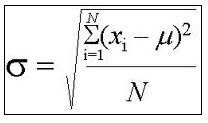Calculator of the Present Value of an Annuity
Instructions: Compute the present value (\(PV\)) of an annuity by indicating the yearly payment (\(D\)), the number of years that the payment will be received for (\(n\)), the interest rate (\(r\)), and the payment that is received right now (\(D_0\)), if any (leave empty otherwise):
Present Value of an Annuity Calculator
More about the this step by step annuity calculator so you can better understand how to use this solver: The present value (\(PV\)) of an annuity payment \(D\) depends on the interest rate \(r\), the number of years the payment will be received from, and whether or not the first payment is right now or at the end of the year.
How do you calculate the present value of an annuity?
If the first payment of an annuity stream of payments of \(D\) is made at the end of the year, we then have a regular annuity, and its present value (\(PV\)) can be computed using the following formula:
\[ PV = \displaystyle \sum_{k = 1}^{n} \frac{D}{(1+r)^k} = D \left(\frac{1}{r} - \frac{1}{r(1+r)^n} \right) \]On the other hand, if the first payment \(D_0\) is made now, then we have an annuity due, and its present value (\(PV\)) can be computed using the following formula.
\[ PV = D_0 + \displaystyle \sum_{k = 1}^{n} \frac{D}{(1+r)^k} = D \left(\frac{1}{r} - \frac{1}{r(1+r)^n} \right) \]What applications are there for the present value of an annuity?
One typical case is the case of pensions, where you want to calculate how much money you need to put today in the bank in order to get a certain amount in yearly pension for the next 25 years.

Example of an annuity calculation
Question: You expect to retire within soon, and you expect to live 25 years after retirement. You want to receive, $20,000 a year at the end of those 25 years. How much money you need to put in the bank today to fund that pension, if the bank gives you an interest rate of \(r = 3%\) annually?
Solution:
Hence, the present value of the annuity is calculated using the following formula:
\[ \begin{array}{ccl} PV & = & \displaystyle \sum_{k = 1}^{n} \frac{D}{(1+r)^k} \\\\ \\\\ & = & \displaystyle \frac{D}{1+r} + \frac{D}{(1+r)^2 } + ... + \frac{D}{(1+r)^n} \\\\ \\\\ & = & \displaystyle D \left(\frac{1}{r} - \frac{1}{r(1+r)^n}\right) \\\\ \\\\ & = & \displaystyle 20000 \left(\frac{1}{0.03} - \frac{1}{0.03(1+0.03)^{25}}\right) \\\\ \\\\ & = & 348,262.95 \end{array} \]Therefore, we get that the present value for this annuity type is \( \text{\textdollar}348,262.95 \).
Other online financial calculators
If you are trying to compute the present value of an annuity in which the yearly payment increases, use the following calculator of growing annuities .
For dealing with perpetuities (this is, an infinite sequence of cash flows), likely you will like to use this present value of a perpetuity calculator.






